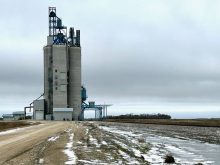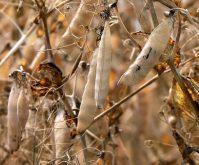MarketsFarm — It was a mixed bag for forecasted seeded pulse acres in the United States, according to the U.S. Department of Agriculture (USDA).
USDA released its acreage report on Friday, with data provided by respondents between May 30 and June 15. The report came two days after Statistics Canada (StatCan) released its June acreage estimates.
Dry pea acres grew by 80,000 to 999,000 in 2023. While Idaho, Nebraska, South Dakota and Washington all planted fewer acres, the two largest producers, Montana and North Dakota, seeded 590,000 and 290,000 acres of dry peas, respectively. These figures represented 55,000 and 60,000 additional acres from those two states.
Read Also

Canada October retail sales down 0.2 per cent; seen up 1.2 per cent in November
Canadian retail sales fell by 0.2 per cent in October from September to $69.44 billion, on lower sales at food and beverage retailers, Statistics Canada said on Friday.
Meanwhile, chickpea area grew by 33,900 acres to 387,000. On the flip side, Washington was the only state to lose chickpea acres, dropping 6,000 to 83,000. Montana, the largest chickpea-producing state, added 18,000 acres to 205,000, while Idaho grew 12,000 more acres than last year at 73,000.
U.S. dry bean acres for 2023 were estimated at 1.211 million according to USDA, 39,000 less than 2022’s total. Nebraska had the largest loss in acreage, declining by 17,000 acres at 98,000. Washington was the only state to plant more dry bean acres, adding 16,000 acres at 43,000. North Dakota, the biggest dry bean-producing state, shed 10,000 acres to 560,000.
Lentil acres in the U.S. took a big hit with 127,000 fewer acres than in 2022, putting the 2023 estimate at 533,000. Every state lost lentil acres with the biggest decline found in Montana, which saw a drop of 100,000 acres to 400,000.
StatCan reported last Wednesday that dry pea area fell to its lowest total since 2011 after losing 328,000 acres, to 3.04 million. There were an estimated 81,800 more chickpea acres planted in Canada at 315,600, the highest estimate since 2020. The country added 20,100 dry bean acres for an estimated 317,700 acres in 2023, the first gain in seeded area for the crop since 2020. Canadian lentil area fell to its lowest since 2014 after a decline of 652,800 acres, to 3.669 million.
— Adam Peleshaty reports for MarketsFarm from Stonewall, Man.
















